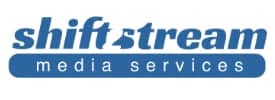- About
- Members
- Sponsors
- Subcommittees
- About Our Subcommittees
- Technology Group 3
- Implementation Team 1 – Advanced Emergency Information
- Implementation Team 2 – India
- Implementation Team 3 – ATSC 3.0 Conformance
- Implementation Team 4 – Brazil
- Implementation Team 5 – Tower Network
- Implementation Team 7 – Caribbean
- Implementation Team 8 – Automotive
- Planning Team 4 – Future Broadcast Ecosystem Technologies
- Planning Team 5 – Automotive Applications
- Planning Team 6 – Global Recognition of ATSC 3.0
- Planning Team 9 – Sustainability
- Technical Documents
- News
- Events
- Spotlight ATSC 3.0
- Contact Us
- Member Login
- Member Meetings
- Advanced Search
Search Site
Member Links
- About
- Members
- Sponsors
- Subcommittees
- About Our Subcommittees
- Technology Group 3
- Implementation Team 1 – Advanced Emergency Information
- Implementation Team 2 – India
- Implementation Team 3 – ATSC 3.0 Conformance
- Implementation Team 4 – Brazil
- Implementation Team 5 – Tower Network
- Implementation Team 7 – Caribbean
- Implementation Team 8 – Automotive
- Planning Team 4 – Future Broadcast Ecosystem Technologies
- Planning Team 5 – Automotive Applications
- Planning Team 6 – Global Recognition of ATSC 3.0
- Planning Team 9 – Sustainability
- Technical Documents
- News
- Events
- Spotlight ATSC 3.0
- Contact Us
- Member Login
- Member Meetings
- Advanced Search
Cloud Collaborators: Thomson Broadcast, Triveni Digital, Synamedia, and Pace Combine Efforts to Advance ATSC 3.0
Posted on June 2, 2020 in ATSC News
 The deployment of ATSC 3.0 represents both a tremendous opportunity and a new challenge for companies that develop and offer solutions for broadcasters. Far more complex than digital television, ATSC 3.0 has the capability of merging broadband with broadcast content, offering many more choices for viewers and a potentially vexing number of challenges for broadcasters.
The deployment of ATSC 3.0 represents both a tremendous opportunity and a new challenge for companies that develop and offer solutions for broadcasters. Far more complex than digital television, ATSC 3.0 has the capability of merging broadband with broadcast content, offering many more choices for viewers and a potentially vexing number of challenges for broadcasters.
Collaboration is more than a buzzword for deploying Next Gen TV with broadcasters working together in channel-sharing agreements, and many vendors striking new partnerships to offer comprehensive solutions. The latest example finds ATSC sponsors Thomson Broadcast and Triveni Digital teaming up with Pace Media and Synamedia. The STANDARD caught up with the four to learn more about their experience.
The four noted that the each brought a key piece to the table. Synamedia already powers video signaling for more than 1,000 operators, worldwide and it brings its encoding and packaging capabilities from its video network portfolio. Triveni Digital’s popular GuideBuilder and Broadcast Gateway are key components, Pace Media offers Software as a Service and Thomson Broadcast’s tower transmission products round out the offering. They take pride in the scalability of their system which they say can fit the needs of the smallest broadcaster up to the largest. And the collaboration effort didn’t just start – it’s the result of many discussions with potential broadcaster customers.
“In our discussions with broadcasters, we know that everyone is facing the same four challenges: creating content, managing that content, monetizing the content, and delivering the content,” explains Thomson Broadcast USA President Aby Alexander. “We know that broadcasters are looking for a fast, cost-effective way to trial and deploy ATSC 3.0 with minimal disruption to their existing stations before investing in on-premise equipment. In addition to simplified trial deployment, the cloud-based configuration allows providers to leverage cloud operations for disaster recovery which can eventually be used in conjunction with their permanent solutions, and to seamlessly switch between on-premise and cloud equipment.”
“Both Synamedia and Thomson Broadcast took guidance from several broadcasting groups of many sizes – most of which had similar questions related to cloud technologies. That approach certainly helped us to develop a solution that is garnering a lot of interest from both large and small broadcasting groups,” explains Synamedia Broadcast Solutions Manager Mark Myslinski. “Our original plan was targeting our first demonstrations of this model at NAB 2020. Even after the live show was cancelled, we knew we couldn’t slow down. This model was going to help address the questions most asked by our collective customers – and we knew we had the answer.”
As Ryan Scarratt, Managing Director of Pace Media, points out, “There is no single vendor in the market for an end-to-end solution. Broadcasters wanting to do this themselves would have to go into the market and compare vendors for all the components of the service. Many broadcasters don’t have the time or expertise to do this. All of the partners in the project have extensive experience of broadcasters’ needs for their solution as a component of the service and it will be fascinating to understand what broadcasters feel they can achieve with it.”
Triveni Digital says the collaborative effort creates the ability to trial ATSC 3.0 channels in the cloud, and that could be a remarkable cost-saver for station operators in terms of capital expenditures. “Broadcasters have a lot of questions about ATSC 3.0 and the potential benefits of using cloud technology. In particular, they want to know how the cloud can be used as a vehicle for NextGen TV and as a cost-effective means for disaster recovery,” said Ralph Bachofen, VP of Sales and Marketing at Triveni Digital. “The key benefit of our collaboration is faster, more efficient ATSC 3.0 deployment, followed by capital expenditure savings. With the cloud, there’s no need to invest in on-premises equipment as the cloud is based on a ‘Software as a Service’ business model. An ATSC 3.0 on-premises and cloud model is now available for broadcasters and can easily be deployed in nearly any broadcaster configuration.”
The team also noted that the International Telecommunications Union (ITU) has formally recognized ATSC 3.0 as a system to be considered by countries wishing to introduce a second generation digital broadcast standard, thus paving the way for countries around the world to evaluate and use the IP-based digital broadcast standard. This channel-in-the-cloud solution now has potential for international implementation.
“We are thrilled to be working with Thomson Broadcast and Triveni to help speed up ATSC 3.0 adoption,” said Julien Signes, Senior Vice President and General Manager, Video Network at Synamedia. “The new broadcast standard promises to revolutionize the way people consume video content, which aligns with our ongoing commitment to transform how people are entertained and informed.”
“The target audience is a broadcaster who’d like to deliver ATSC 3.0 in a compelling and immersive way for their audience. We know that the U.S. deployment of ATSC 3.0 is in its early days – like the early days of the Internet, when it was only about informational pages. Ten years from now, we anticipate that NEXTGEN TV will be a totally different ballgame from what we see today,” concludes Thomson Broadcast’s Alexander.
Posted in ATSC News
News Categories
News Archives
Subscribe
Subscribe to The Standard, our monthly newsletter. Learn More
Join ATSC
ATSC is a membership organization with both voting and observer categories. Voting members include corporations, nonprofit organizations, and government entities, and they participate actively in the work of ATSC. Observers are individuals or entities not eligible to be a voting member.
Subscribe to our Newsletter
Subscribe to The Standard, our monthly newsletter, to stay up-to-date with ATSC news and events around the world.
Site Links
Contact Us
Advanced Television Systems Committee, Inc.
1300 I Street NW, Suite 400E
Washington, DC 20005
Do you have questions about ATSC?
About ATSC
The Advanced Television Systems Committee, Inc., is an international, non-profit organization developing voluntary standards and recommended practices for digital terrestrial broadcasting. ATSC member organizations represent the broadcast, broadcast equipment, motion picture, consumer electronics, computer, cable, satellite, and semiconductor industries. ATSC also develops digital terrestrial broadcasting implementation strategies and supports educational activities on ATSC standards.
© 2024 ATSC








































